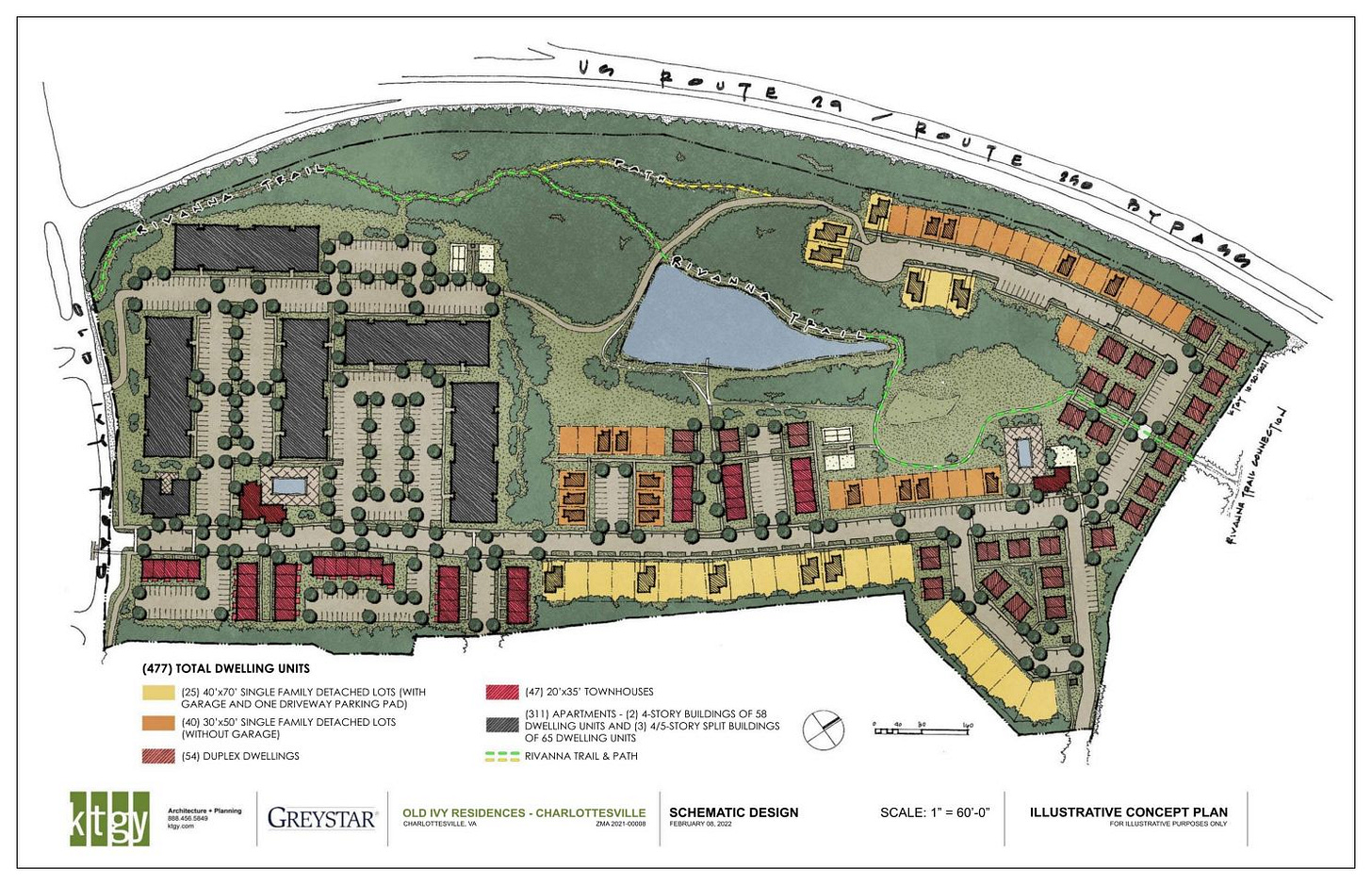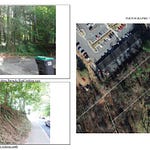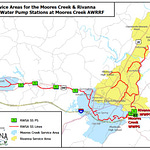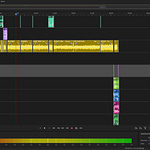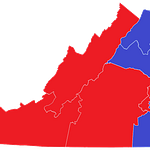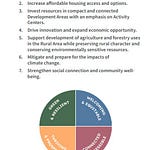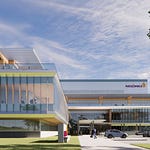We’re now one day past the summer solstice, and one day closer to the next one. There’s a rhythm to our existence on this planet that never stops so it makes a lot of sense to take a lot of snapshots. Here’s another installment of Charlottesville Community Engagement capturing a few observations about June 22, 2022, the first full day of summer. I’m Sean Tubbs, ready to adjust to days that shed light as I shed light on more buildings and food.
On today’s program:
Details on how Charlottesville’s future zoning will match Future Land Use Map vision for more density all across the city
Lights will soon be installed at the McIntire skate park in Charlottesville
The Albemarle Planning Commission takes up a rezoning for 525 units on Old Ivy Road and the developer asks for more time to retool the application
First Shout-out is for the Charlottesville Area Tree Stewards
In today’s first subscriber-supported shout-out, have you ever wanted to learn as much as you can about how to preserve and protect trees? The Charlottesville Area Tree Stewards are opening up registration for their fall series of online training sessions and field activities running from August 9 through November 19. Full tuition details are at charlottesvilleareatreestewards.org and if you want to get a feel for what you may learn, there’s a public tree identification walk through the grand trees spanning the front areas of the University of Virginia on Sunday, June 26. Attendance is limited, so register today!
June 27 meeting scheduled to review Charlottesville zoning report
Two of the three components of Charlottesville’s update of its overarching land use policies are complete, and the work towards the third is moving along. Last week, the city released what’s being called the Diagnostics and Approach Report which provides a pathway forward for how the city’s zoning ordinance will be rewritten. (read the draft)
“This zoning rewrite project is not about adding more plans, goals, or objectives – this work is entirely focused on implementing the Affordable Housing Plan and the Comprehensive Plan,” writes James Freas, the city’s director of Neighborhood Development Services.

All of this work has been done and will be done done under the auspices of the Cville Plans Together initiative. A public meeting will be held on Monday, June 27 at the Ting Pavilion about the document.
“At the core of the entire Cville Plans Together process there has been a commitment to addressing issues of racial equity and affordable housing and that core commitment remains as we work through the zoning rewrite. Meeting this commitment requires that our zoning allow people to build more housing units throughout the city, that it establishes incentives to include affordable units in new multi-family development, and that it is sensitive to the potential for displacement.”
The draft report calls for several steps to make the zoning ordinance more predictable. This would include restricting the usage of the special use permit process to uses rather than bulk and massing. It would also discourage further rezonings.
The future zoning map is to facilitate the vision of the Future Land Use Map, which calls for all single-family residential lots to be able to build three units with a fourth available if it is rented or sold at city-defined affordability levels. In fact, much of the additional density in higher-intensity zones would require that same affordability for “bonus” units.
In a separate but related process, HR&A Advisors are working with Code Studio and the city on an inclusionary zoning ordinance to codify the details. This will also include the Sensitive Communities areas which are intended to stop further displacement in neighborhoods such as Fifeville and Tenth and Page. Several properties in those areas have recently sold for high amounts.

Other useful information and recommendations in the draft:
A description of housing types begins on page 33 if you want to know the difference between a carriage house and a triplex and a twelveplex.
There is a recommendation to create zoning districts based on building form to reflect the different designations in the Future Land Use Map. There would be a “house-scale district” and a “medium-scale district.”
Smaller lots would be permitted more “lot coverage” than larger ones.
Other recommendations include reducing parking requirements and the modification of existing setback requirements to provide flexibility to place more units on lots. There are pages of diagrams that depict how this might be achieved for different lot sizes and shapes.
There is a focus on urban form rather than density, allowing density to be regulated by building codes and fire codes.
Building heights would be expressed in both feet and stories
Some of the many existing mixed use corridor districts with similar building heights and an urban form could be combined into a single district.
The word “family” would be replaced with “household” or “unit”
There should be more use of manufactured homes particularly for “tiny” homes
The Entrance Corridor Review Board should be eliminated by building standards into the zoning code
The work is not yet complete. Some but not all of the existing zoning categories have been taken through the process but Appendix B shows the ones that have. There will certainly be more information about this process in the next few months. Please stay tuned to this newsletter which seeks to bring as much information as possible.

Fundraising goal met to light up McIntire Skate Park
A public-private partnership to relocate a skate park removed for road construction resulted in a new facility in McIntire Park opening in 2019. But until now, there have been no lights due to budget cuts to the project made to get it completed.
This morning the city announced a fundraising goal has been met and lights will be installed by mid-September. When in place, the park will stay open until 10 p.m.
“The lights are LED fixtures from MUSCO Lighting, chosen for their low-light pollution, energy use, heat emission, and longevity,” reads a press release.
The funding for the lights comes entirely from private donations with contributions from the Bama Works Fund, the Perry Foundation, the Rock The Lights Campaign by Duane Brown, Upper-level Screen Printing, Freestyle, Hatcher Consulting, and Anonymous Local Foundation.

Second shout-out: SCAN holding a Beekeeping 101 class
Since the very beginning of this newsletter, one long-time Patreon supporter has used his shout-out to draw your attention to the work of the Plant Northern Piedmont Natives Campaign but today let’s talk about National Pollinator Week, which runs through June 26! There will be many events designed to draw your attention to the crucial role that bees and other creatures play in making sure plants reproduce.
On Saturday at 10 a.m., Scottsville’s Center for the Arts and Natural Environment will host Allison Wickham from Siller Pollinator Company will lead an introduction to bees and beekeeping. If you're thinking about starting a backyard beehive or are just curious about what's involved with keeping bees, then this is a great introductory class for you. There will even be a honey competition judged by Allison Wickham! For the tuition rate and to register, visit svilleartsandnature.org for a list of all of the upcoming classes.
There are plenty more pollinating resources on the Plant Northern Piedmont Natives Facebook page, so sign up to be notified of lectures, plant sales, and more!
Greystar asks for more time on Old Ivy Residences rezoning after Planning Commission public hearing
The Albemarle County Planning Commission had a long public hearing on June 14 on Greystar Development’s rezoning request for up to 525 units on about 35 acres on Old Ivy Road.
The five parcels of property are nearby University Village, Huntington Village, Ivy Gardens, and several office spaces mostly owned by the UVA Foundation.
“And then to the north of course is the Darden Business School at UVA, North Grounds including the law school and other nearby UVA destinations,” said Rebecca Ragsdale, a planning manager with the county.

There are three different zoning types across the property, with R-1, R-10, and R-15. The higher intensity zoning parcels have legally-binding conditions on them called proffers.
“And one of those proffers is that the R-15 properties are limited to R-1 density until transportation proffers are deemed satisfied by the Board of Supervisors,” Ragsdale said.
Some of the land had been owned by the Virginia Department of Transportation for usage for the now-defunct Western Bypass.
The Rivanna Trail runs through the site and portions of it will be rerouted as part of the development.
There are discrepancies between what county staff in terms of affordable housing and what the developer had offered. Ragsdale said the developer’s interpretation assumed that the R-15 properties are already rezoned and should not trigger the county’s policy. As such, they’re offering 14 of the units to be designated as affordable rentals. Staff disagrees.
But the major concerns related to transportation impacts.
Planning Manager Kevin McDermott said a traffic study commissioned by the developer found that intersections on the western end of Old Ivy Road particularly at the U.S. 250 interchange are already overburdened.
“Existing conditions at those are currently failing for many movements and poor all around,” McDermott said.
McDermott said the county and the Virginia Department of Transportation are working on potential options but the work is not complete.
“If they are determined as feasible, we would need to identify funding for that,” McDermott said.
The eastern end of Old Ivy Road has a narrow railroad underpass, which McDermott said was also being studied but nothing is shovel-ready.
McDermott also said the traffic study also showed that Old Ivy Residences would cause further delays. He said there have been some improvements to upgrade the road such as installation of curb and gutter and a thirty-foot road width. However, he said nothing has been done to realign the roadway at the underpass and there’s a partial sidewalk on the south side of Old Ivy Road.
Greystar argues development is consistent with comp plan
John Clarkson is the managing director of Greystar, which is based in Charleston, South Carolina.
“We think we have a project here that is very appropriate for what is defined by the zoning,” Clarkson said. “We intend to build a very thoughtful and well-designed project that meets the housing demand.”
Greystar hired the law firm Williams Mullen to help them through the land use process in Albemarle. Attorney Valerie Long said there have been enough improvements on Old Ivy Road since the proffer was adopted in the rezoning in 1985.
“Most significantly, the University’s construction of Leonard Sandridge Drive which obviously took a tremendous amount of traffic off of Old Ivy,” Long said. “Really the outstanding one is the railroad trestle. We certainly understand and agree that is a problem and we are comforted and encouraged by Mr. McDermott’s comments about how closely they are working with VDOT and the University representatives to address that issue.”
Long said Greystar will make contributions to a solution when it is identified. She said the issue before the county is whether to approve dense housing inside of the designated growth area where the units would be close to where people want to be.
There is currently no transit along Old Ivy Road, but Long said they would build a bus stop. They’re also asking for a reduction in the parking requirements.
Long also addressed the concern about the developer’s interpretation of the county’s housing policy. The Bivins that Long refers to is Commissioner Julian Bivins, who represents the Jack Jouett district where this development would be built.
“The land is zoned R-15, not all of it it, but the vast majority as Mr. Bivins indicated, about 27 acres, are zoned R-15,” Long said. “So we’re not asking for an increase in those parcels in terms of units.”
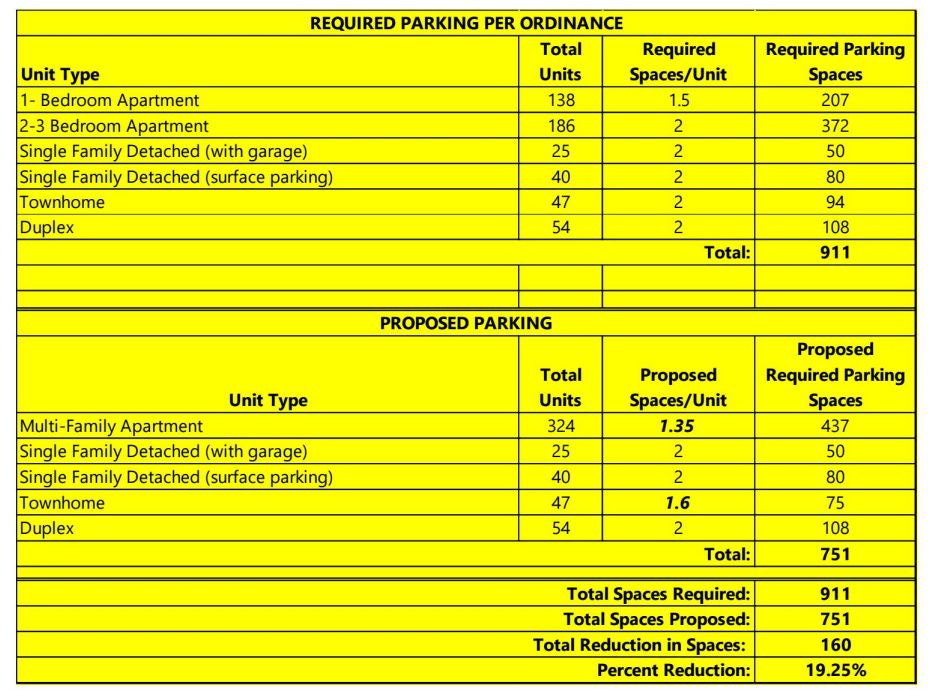
Rents would be between $1,850 and $3,600. Bivins suggested that Greystar offer more than just 14 units.
“Affordable units is not about poverty,” Bivins said. “Affordable units is about jobs and because our community morphing into more of a service industry, those jobs don’t pay as much as some of the other jobs used to be. So I think if this goes forward, when it goes forward, it would be a really strong signal that [you] really want to be responsive to the community if [you’re] not saying [you’re] only giving 14 units.”
Public hearing
Over two dozen people people spoke at the public hearing, most of them opposed. One of them was Joel Loving who lives in the Bel Air neighborhood.
“There’s no question that adding as many as 1,500 residents and a thousand vehicles to this small area will have a substantial impact on pedestrian and vehicular traffic, stormwater, the local school system, and I’m sure there’s plenty more that will be discussed this evening,” Loving said.
Elizabeth Kutchai recently moved into University Village after living in Charlottesville for decades. She said 525 units are too many.
“The University of Virginia has already erected many new buildings on Old Ivy Road,” Kutchai said. “They also own Ivy Gardens Apartments and have plans to redevelop that property, increasing its density by 150 percent.
See also:
UVA making plans for Ivy Gardens redevelopment, June 9, 2021
UVA committee briefed on new capital projects, June 4, 2022
Many other residents from University Village asked for the Commission to consider specific topics, such as a concern fire and rescue access would be limited.
“No fire department no matter how good they are is going to be able to cope with a fire in a development of this size when you have people packed in there like sardines,” said resident Daniel Avery.
One of the final speakers from University Village was Sally Thomas, who served 16 years on the Board of Supervisors. In 2001, She voted to adopt the Neighborhood Model District zoning to fulfill the Comprehensive Plan goal of compact development in the designated growth areas.
“This Old Ivy apartments complex is not what the county hoped for in smart growth,” Thomas said. “Why not? It’s certainly dense and within the growth area. But it’s also like too many other projects that seemed to be desirable developments. It overloads the present facilities and its interconnectivity just hasn’t quite been developed in a way that will work for both the residents and the neighborhood.”
Only three people spoke in-person at the public hearing in favor of the rezoning. One was the lawyer for the property owner who will sell it to Greystar. Another was John Matthews whose company produced a report for the development.
The other was Ivo Romenesko. He’s a Farmington resident who was also part of the Development Initiative Steering Committee which helped develop the Neighborhood Model.
“The clock is ticking on the growth area,” Romenesko said. “I think that the double digit percentages that are occurring with population in Albemarle and the Planning District put pressure on Albemarle County and I would like to see the growth area accommodate as much reasonably good, well-designed development as it can so that we can preserve the beautiful areas of Albemarle County as long as we can.”
In her rebuttal after the public hearing, Long acknowledged there is work to be done to increase connectivity for both pedestrians and motor vehicles. She said Greystar is offering funds toward improvements.
“Greystar is committed to continuing to negotiate with all of its neighbors,” Long said. “They want to improve the safety and the traffic issues and they’re continuing to make those contributions and as somebody said, make the connections. We’ve spent a lot of time talking to Mr. McDermott and VDOT and other folks. We’ve had our traffic engineer putting suggestions together, our civil engineer drawing plans, submitting them to various off-site owners with engineered plans for paths, for connections, for road improvements. We just can’t do it unilaterally.”
Commissioners had concerns
At-Large Commissioner Luis Carrazana likened the 1985 proffer restricting development until transportation improvements as a gate.
“That is a concept that I believe is very useful particularly as we consider amendments to our Comprehensive Plan,” Carrazana said.
Carrazana said the Commission hears again and again about overburdened roads and overcrowded schools. He also said he did not think the conditions of the proffer have been met.
“In terms of the failing road, and that road is not getting any better,” Carrazana said. “It is dangerous.”
Commissioner Karen Firehock said another constraint is the presence of the railroad, which has been owned by CSX for many years but will soon be owned by the Virginia Passenger Rail Authority. She said the underpass is hazardous after heavy rainfall.
“I have seen cars floating, very surprised UVA students in fact not realizing that wasn’t just a puddle and having cars being towed out and totaled because they were underwater,” Firehock said.
However, Firehock said she felt this was a good area to develop if the connections can be made.
Commissioner Corey Clayborne said he felt the density could be appropriate but traffic concerns are a show-stopper.
“I don’t believe that the transportation piece has been satisfied according to the Board’s stipulation on that,” Clayborne said. “That hasn’t been proven to me tonight.”
Clayborne said he did understand how the developers came up with the number 14 for affordable housing units.
“But nothing prevents you from doing above what the policy asks either and there’s just no way that I could vote for 525 units and… 14?” Clayborne said.
Bivins suggested that Greystar could get permission to connect to Leonard Sandridge Road, which leads out to eastbound U.S. 250.
“I don’t know you do that,” Bivins said. “You all are sophisticated enough and you all have the various buttons that you can push in that administration. I would encourage you do to that and I would particularly encourage you to do that before you meet with the Supervisors.”
Bivins made a motion to recommend denial of the rezoning, but Long approached and asked for a deferral so some of the issues could be worked out. The Planning Commission granted that and Firehock has the final word in this story.
“I will just say that I very much look forward to seeing how the applicant works on all of these things because I think we do believe that density in the urban ring is a good thing,” Firehock said.
Support the program!
There’s a lot of information in this installment of this program, which is the 397th edition of the program. About a quarter of you are paying something to help keep Town Crier Productions in business. I have never been a very good salesperson, and won’t overly pitch.
But, if you are benefiting from this newsletter and the information in it, please consider some form of support. I am not a nonprofit organization and most of my time is spent in putting the newsletter together, which includes producing the podcast.
Supporting the program through a Substack contribution or through Patreon makes it very easy for me to get paid and every single dollar that I get makes me want to work that much harder to serve the community. In just under two years, I’ve produced hundreds of stories that seek to give you information about how decisions are made in our community and in the Commonwealth of Virginia.
For more information on all of this, please visit the archive site Information Charlottesville to learn more, including how you too can get a shout-out! Thank you for reading, and please share with those you think might want to learn a few thing or two about what’s happening.





